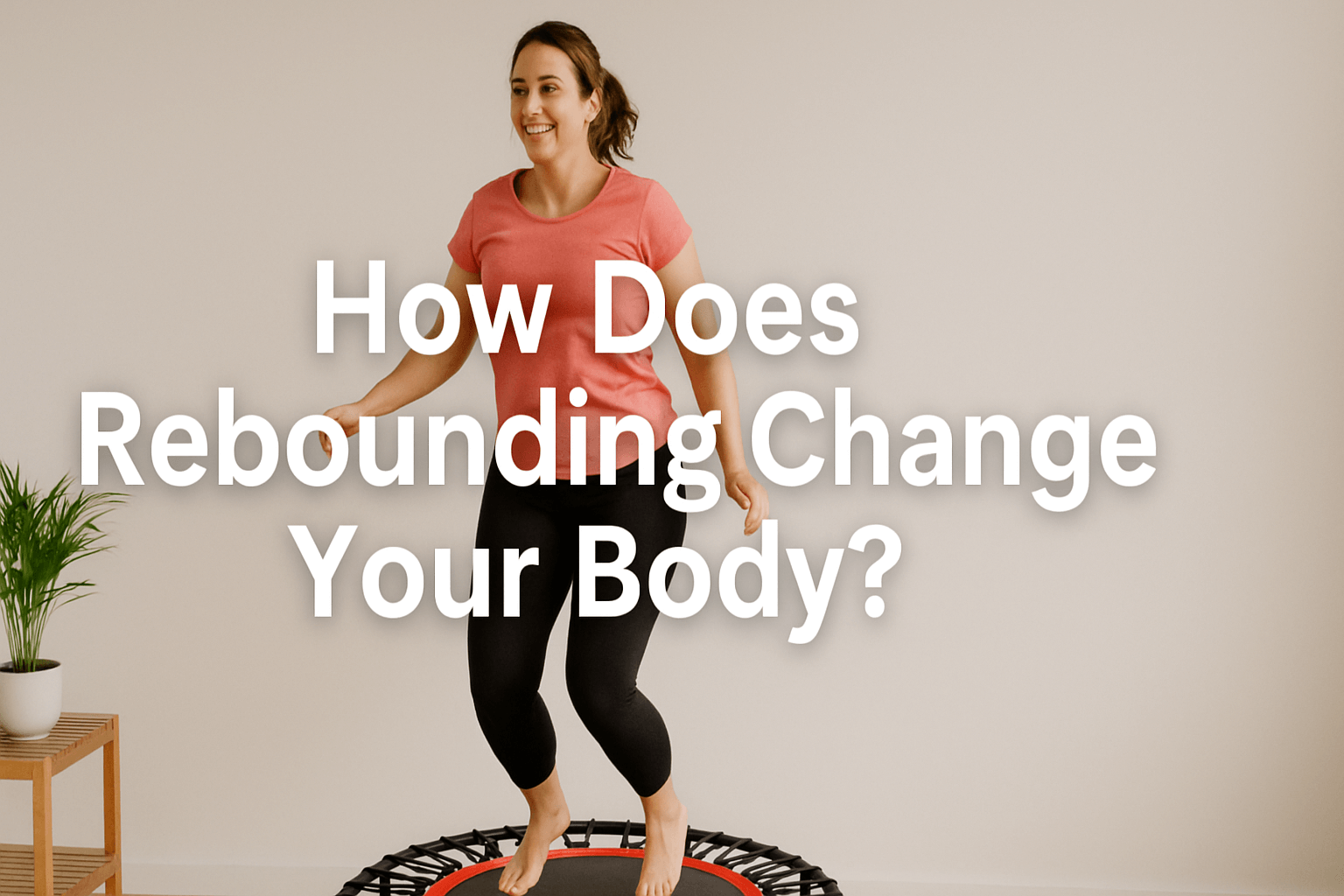
How Does Rebounding Change Your Body?
Ever bounced on a therapeutic rebounder and wondered what it’s really doing? Short answer: it tones muscles, boosts metabolism, and even lifts your mood—all while being gentle on your joints. Think of it as a playful workout that sneaks in serious results. Stick around and you’ll see why parents across the UK are swapping trainers for trampolines.
The Core Principles of Rebounding
What is Rebounding?
Rebounding is simply exercising on a mini-trampoline, but don’t be fooled by the fun factor—it’s far more than child’s play. Picture yourself bouncing lightly while the kids laugh beside you, and at the same time, you’re giving your body a full workout.
It’s becoming a favourite for parents because it fits all fitness levels. Whether you’re easing back into movement after years or chasing new health goals, rebounding adapts to you. It’s active, energising, and doesn’t feel like a chore.
How does Rebounding work?
Every bounce works more muscles than you think. Your legs, core, and glutes are constantly firing, while your balance and stability get a quiet upgrade in the background.
It’s not just about visible muscle, either. The up-and-down motion gets your heart pumping without hammering your joints. Imagine jogging without the pavement-pounding ache—that’s the beauty of it.

The Role of G-Force and Cellular Exercise
Here’s where the science sneaks in. Each bounce creates tiny changes in gravity, or G-force. One second you’re lighter, the next you’re heavier.
This constant shift stimulates every cell in your body, like a microscopic workout happening under the surface. It’s why rebounding has been called “cellular exercise”—you’re not just training muscles, you’re training your body at its smallest building blocks.
The Lymphatic System Connection
The lymphatic system doesn’t have a pump like your heart does, so it relies on movement to get going. Rebounding acts like a natural pump, pushing lymph fluid around the body.
That means better circulation, improved detox, and a stronger immune system. Think of it as spring cleaning for your insides—without the bleach or mop.
Key Ways Rebounding Transforms Your Body
Cardiovascular Health
A Low-Impact Cardio Workout
If you’ve ever dreaded a run because of shin splints or sore knees, rebounding feels like a sigh of relief. It gives you all the benefits of cardio without the crash landing.
It’s the sort of workout you can actually look forward to—music on, bounce going, and no joint pain waiting to greet you afterwards.
Strengthening the Heart and Lungs
With regular practice, your heart works more efficiently and your lung capacity improves. You’ll notice everyday things, like climbing stairs or chasing kids around the park, becoming easier.
It’s like giving your cardiovascular system a tune-up without ever stepping foot on a treadmill.

Muscle Toning and Strength
Toning Core and Leg Muscles
Those little jumps add up. Your legs and glutes take centre stage, but your core is always engaged too.
Over time, you’ll feel stronger, stand taller, and move with more stability. Even simple daily tasks, like carrying shopping bags or lifting little ones, become easier.
Improving Overall Body Strength
Because so many muscles are working at once, your whole body benefits. Balance improves, coordination sharpens, and strength builds gradually.
It’s a sneaky way to build a fitter, more resilient body—all while doing something that feels playful rather than punishing.
Bone Density and Joint Health
Rebounding's Gentle Impact on Joints
Unlike pavement pounding or high-impact aerobics, the rebounder absorbs much of the shock. That makes it perfect if you’ve had injuries in the past or simply want something safer.
It’s exercise your joints will actually thank you for.

A Final Bounce
Rebounding isn’t just another fitness fad—it’s a full-body upgrade disguised as fun. From toned muscles to a healthier heart and a happier mind, it ticks boxes most workouts can’t.
So next time you see a mini-trampoline, don’t just think of kids bouncing about. Picture yourself using it as a tool to reshape your health, one joyful bounce at a time.
Disclaimer: This article is for informational use only and not a substitute for medical advice. Always seek professional guidance before starting any new exercise programme.
Have you checked out our other posts?
How Does Rebounding Help Lipedema?
How Does Rebounding Help With Cellulite?




Leave a comment